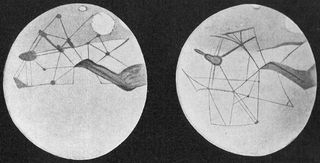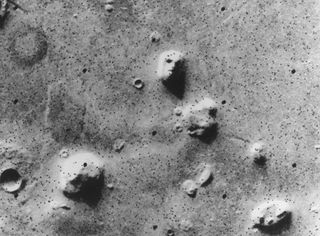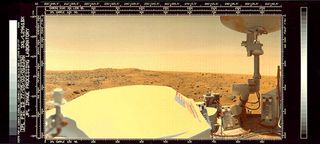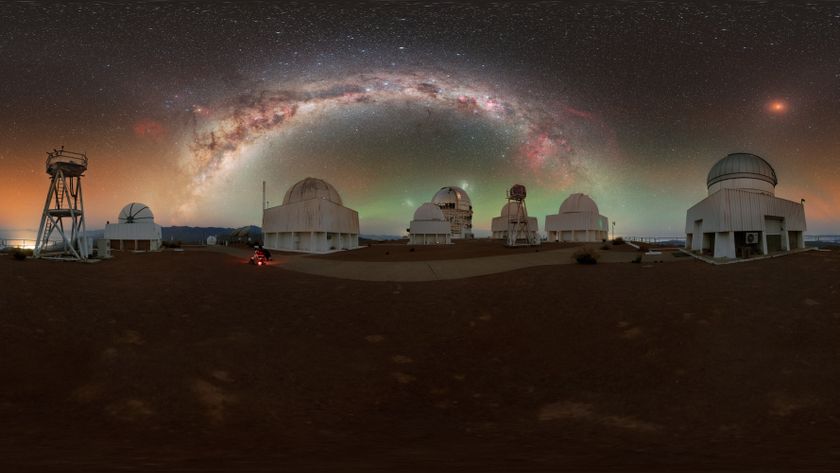5 Overhyped Mars Discoveries

NASA has been trying to dampen expectations for an upcoming Mars announcement after rumors abounded that the agency's Curiosity rover discovered something big.
"Rumors and speculation that there are major new findings from the mission at this early stage are incorrect," NASA officials wrote in a statement on Thursday (Nov. 29). "The news conference will be an update about first use of the rover's full array of analytical instruments to investigate a drift of sandy soil."
The announcement will be made at the Fall Meeting of the American Geophysical Union in San Francisco on Monday (Dec. 3).
In light of this latest saga, we took a look back at the five most overhyped Mars discoveries in years past.
1. Canals on Mars

One of the most famous, and famously wrong, discoveries about our neighboring planet was the 1870s claim that canals had been dug into the Martian crust, thus "proving" the existence of life on Mars. Prominent astronomer Percival Lowell popularized the canal theory, based on the notion that Mars was once green and wet, but had lately been drying out, so the Martians had engineered canals to route water down from the planet's polar ice caps. [The Search for Life on Mars (Photo Timeline)]
Historians say the canal frenzy was boosted by the widespread excitement over the construction of the Suez Canal, an engineering marvel that was completed in 1869.
Get the Space.com Newsletter
Breaking space news, the latest updates on rocket launches, skywatching events and more!
The idea of canals on Mars persisted well into the 20th century, until observation technologies were advanced enough to reveal the canals as an optical illusion.
2. Flowing water on Mars
On June 22, 2000, NASA announced it had found evidence for liquid water currently flowing on the surface of Mars. The news, based on photos of gullies etched across the Martian surface taken by NASA's Mars Global Surveyor, made a big splash. The gullies seemed to have been formed by flowing water, and debris and mud deposits nearby suggested liquid water as well. What's more, researchers at the time judged the structures to be freshly formed, implying that liquid water exists on Mars today.
However, in the more than 10 years since the announcement, scientists have yet to confirm the gullies are caused by flowing water, or offer definitive proof of water on Mars today. While experts mostly agree that water ran over Mars' surface in the ancient past, there is lingering disagreement over the present day.

3. Face on Mars
A black-and-white photo of Mars taken by NASA's Viking 1 orbiter in 1976 quickly captivated the public because it revealed an eerie likeness of a human face on the planet's surface. Although NASA scientists just as quickly judged it to be a naturally occurring outcropping of rock, accentuated by light and shadow, many people searched for a deeper explanation. Some fixed on the idea that the formation was constructed by an alien civilization, and looked for further signs of a crumbling extraterrestrial city in the region.
The "face on Mars" has been imaged in higher resolution by subsequent NASA missions, which have bolstered the optical illusion explanation. Still, the uncanny allure of the structure has never totally faded. [Photos: The 'Face on Mars' and Other Illusions]
4. Mysterious meteorite
A small piece of Mars landed in Antarctica about 13,000 years ago in the form of meteorite, which was discovered in 1984 and called ALH84001. This rock was subsequently found to contain a mineral called magnetite, which on Earth is associated with the presence of microorganisms. Carbonate materials in the meteorite also indicate that liquid water was present when it formed, at least 16 million years ago.
Taken together, some construed these findings as evidence that Mars once had microbial life. However, most scientists caution that the magnetite may not have a biological connection, and that the rock doesn't offer any solid proof. Additionally, claims that small structures inside the meteorite appear to be fossilized nanobacteria have met with skepticism, and stirred more controversy.

5. Microbes on Mars
NASA's first-to-Mars landers, Viking 1 and 2, which touched down on the Red Planet in 1976, were sent explicitly to look for life. One experiment did appear to find evidence for metabolic reactions, which its leaders announced as proof of life on Mars. The claim was big news, but many other scientists rejected the life interpretation, suggesting instead that the reactions were caused by nonliving agents in the Martian dirt.
In the ensuing years, the Viking life-detection experimenters Gilbert Levin and Patricia Ann Straat have stood by their claims, but no rock-solid evidence for microbes on Mars has ever been found.
Visit SPACE.com Monday for complete coverage of NASA's Mars rover Curiosity announcement and other space news from the American Geophysical Union's annual fall meeting.
Follow Clara Moskowitz on Twitter @ClaraMoskowitz or SPACE.com @Spacedotcom. We're also on Facebook & Google+.

Join our Space Forums to keep talking space on the latest missions, night sky and more! And if you have a news tip, correction or comment, let us know at: community@space.com.

Clara Moskowitz is a science and space writer who joined the Space.com team in 2008 and served as Assistant Managing Editor from 2011 to 2013. Clara has a bachelor's degree in astronomy and physics from Wesleyan University, and a graduate certificate in science writing from the University of California, Santa Cruz. She covers everything from astronomy to human spaceflight and once aced a NASTAR suborbital spaceflight training program for space missions. Clara is currently Associate Editor of Scientific American. To see her latest project is, follow Clara on Twitter.











